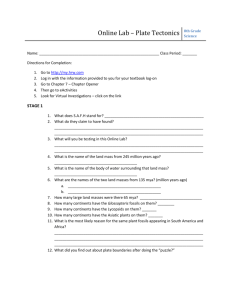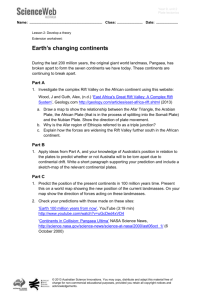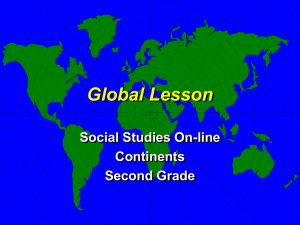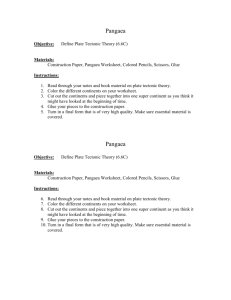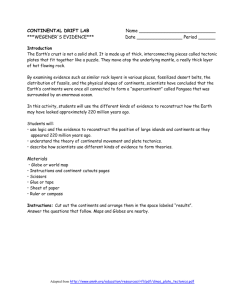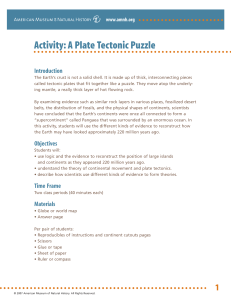A Plate Tectonics Puzzle
advertisement
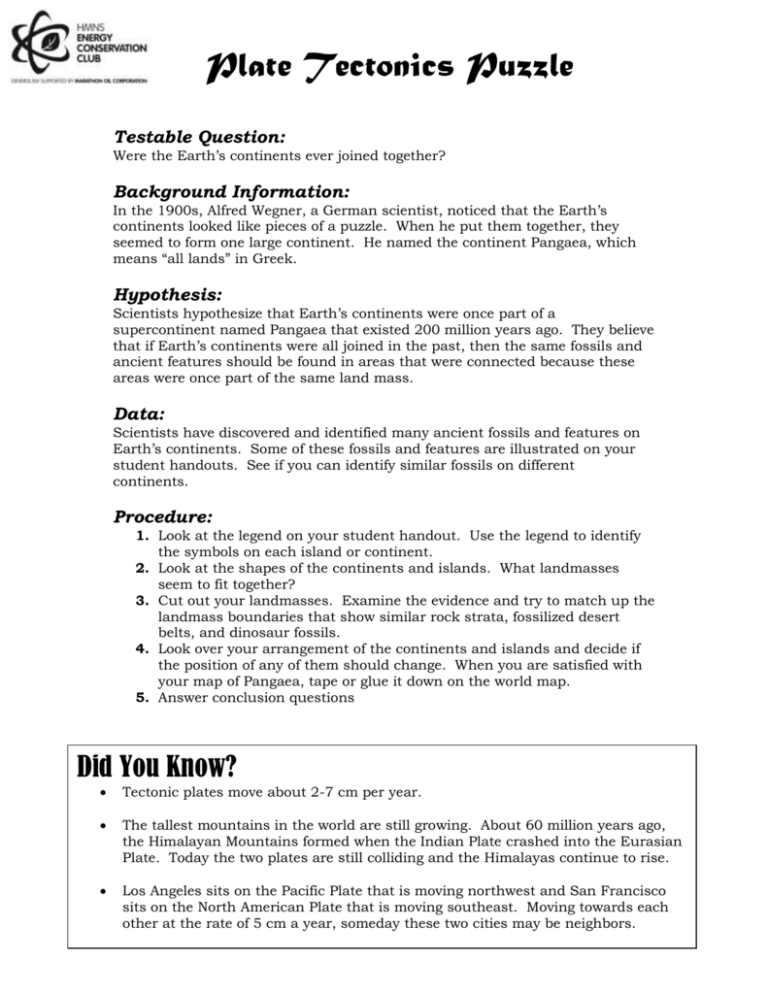
A Plate Tectonics Puzzle Testable Question: Were the Earth’s continents ever joined together? Background Information: In the 1900s, Alfred Wegner, a German scientist, noticed that the Earth’s continents looked like pieces of a puzzle. When he put them together, they seemed to form one large continent. He named the continent Pangaea, which means “all lands” in Greek. Hypothesis: Scientists hypothesize that Earth’s continents were once part of a supercontinent named Pangaea that existed 200 million years ago. They believe that if Earth’s continents were all joined in the past, then the same fossils and ancient features should be found in areas that were connected because these areas were once part of the same land mass. Data: Scientists have discovered and identified many ancient fossils and features on Earth’s continents. Some of these fossils and features are illustrated on your student handouts. See if you can identify similar fossils on different continents. Procedure: 1. Look at the legend on your student handout. Use the legend to identify the symbols on each island or continent. 2. Look at the shapes of the continents and islands. What landmasses seem to fit together? 3. Cut out your landmasses. Examine the evidence and try to match up the landmass boundaries that show similar rock strata, fossilized desert belts, and dinosaur fossils. 4. Look over your arrangement of the continents and islands and decide if the position of any of them should change. When you are satisfied with your map of Pangaea, tape or glue it down on the world map. 5. Answer conclusion questions Did You Know? Tectonic plates move about 2-7 cm per year. The tallest mountains in the world are still growing. About 60 million years ago, the Himalayan Mountains formed when the Indian Plate crashed into the Eurasian Plate. Today the two plates are still colliding and the Himalayas continue to rise. Los Angeles sits on the Pacific Plate that is moving northwest and San Francisco sits on the North American Plate that is moving southeast. Moving towards each other at the rate of 5 cm a year, someday these two cities may be neighbors. A Plate Tectonics Puzzle Conclusions: 1. Was the scientists’ hypothesis proved or disproved by the data you analyzed? Explain your answer. 2. What clues, if any, exist to show that Africa and South America were once connected? 3. Describe how the position of the continents has changed over time. 4. Assuming continents move at an average of 2 cm per year, how many years would it take for each continent to move 1 meter? 1 kilometer? 5. In the space below, draw your prediction of what Earth’s continents may look like in 200 million years from now. A Plate Tectonics Puzzle A Plate Tectonics Puzzle


